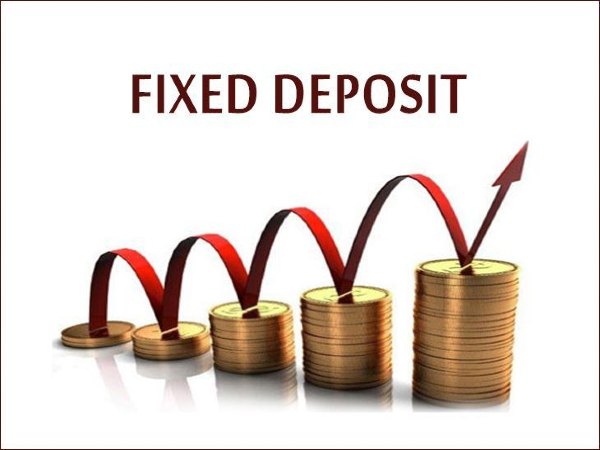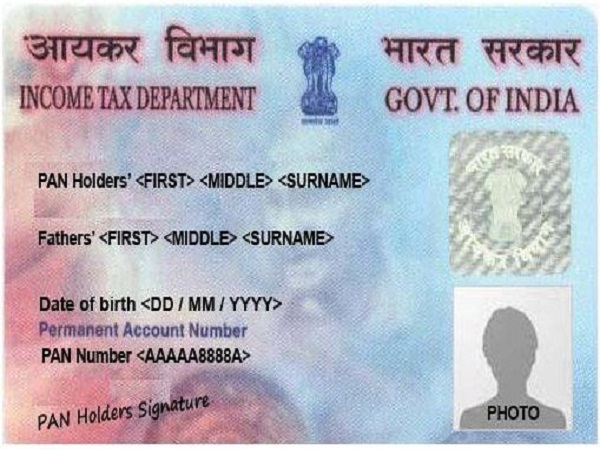SBI vs HDFC vs ICICI vs BOI vs IDFC First Bank: Revised ROI On FD Compared
[ad_1]
Read More/Less
SBI FD Rates (below Rs 2 Cr) For Regular Public
The tenure of an SBI FD will range from 7 days to 10 years, depending on the need for investment and whether it is short-term or long-term. For general customers, these FD interest rates range from 2.9 percent to 5.4 percent. These rates are in effect from January 2021.
| Tenure | ROI in % |
|---|---|
| 7 days to 45 days | 2.90% |
| 46 days to 179 days | 3.90% |
| 180 days to 210 days | 4.40% |
| 211 days to less than 1 year | 4.40% |
| 1 year to less than 2 years | 5.00% |
| 2 years to less than 3 years | 5.10% |
| 3 years to less than 5 years | 5.30% |
| 5 years and up to 10 years | 5.40% |

SBI FD Rates For Senior Citizens
India’s largest lender, State Bank of India (SBI), recently extended its SBI WeCare FD for senior citizens for the third time, until June 30. The interest rate on SBI’s special FD scheme for senior citizens will be 80 basis points (bps) higher than the general public rate. SBI presently proposes a 5.4 percent interest rate on five-year fixed deposits to the general public. The interest rate on a fixed deposit made by a senior citizen for a tenure of 5 Years and above only under the special FD scheme i.e. SBI Wecare Special FD, will be 6.20 percent. Below are the SBI FD rates for senior citizens for a deposit amount of less than Rs 2 Cr.
| Tenure | ROI in % |
|---|---|
| 7 days to 45 days | 3.40% |
| 46 days to 179 days | 4.40% |
| 180 days to 210 days | 4.90% |
| 211 days to less than 1 year | 4.90% |
| 1 year to less than 2 years | 5.50% |
| 2 years to less than 3 years | 5.60% |
| 3 years to less than 5 years | 5.80% |
| 5 years and up to 10 years | 6.20% |

HDFC Bank FD Rates For Regular Public
HDFC Bank provides 2.50 percent interest on deposits with a maturity period of 7 to 29 days, and 3 percent on deposits with a maturity period of 30 to 90 days. On deposits for 91 days to 6 months, the interest rate is 3.5 percent, and on deposits for 6 months to less than one year, the interest rate is 4.4 percent. On one-year FDs, the bank offers 4.9 percent interest. Term deposits maturing in one year and two years yield 4.9 percent interest. FDs with a maturity period of two to three years will generate 5.15 percent. For 3 to 5 years, you’ll get a 5.30 percent interest rate. Deposits with a maturity period of 5 to 10 years will provide 5.50 percent interest rate respectively.
| Tenure | ROI in % |
|---|---|
| 7 – 14 days | 2.50% |
| 15 – 29 days | 2.50% |
| 30 – 45 days | 3.00% |
| 46 – 60 days | 3.00% |
| 61 – 90 days | 3.00% |
| 91 days – 6 months | 3.50% |
| 6 months 1 days – 9 months | 4.40% |
| 9 months 1 day < 1 Year | 4.40% |
| 1 Year | 4.90% |
| 1 year 1 day – 2 years | 4.90% |
| 2 years 1 day – 3 years | 5.15% |
| 3 year 1 day- 5 years | 5.30% |
| 5 years 1 day – 10 years | 5.50% |

HDFC Bank FD Rates For Senior Citizens
The HDFC Bank also extended its special fixed deposit scheme for senior citizens until June 30, the third time the bank has done so. On these deposits, HDFC Bank offers 75 basis points (bps) higher interest rates. If a senior citizen places a fixed deposit with HDFC Bank Senior Citizen Care FD, the interest rate will be 6.25 percent. These rates are in effect from November 2020. Senior Citizens who plan to lock a fixed deposit less than Rs 5 crore for a period of 5 years one day to 10 years during the special deposit period from 18th May’20 to 30th June’21 will get an additional premium of 0.25 percent over and above the current premium of 0.50 percent. For a deposit amount of less than Rs 2 Cr, HDFC FD Rates for senior citizens are listed below.
| Tenure | ROI in % |
|---|---|
| 7 – 14 days | 3.00% |
| 15 – 29 days | 3.00% |
| 30 – 45 days | 3.50% |
| 46 – 60 days | 3.50% |
| 61 – 90 days | 3.50% |
| 91 days – 6 months | 4.00% |
| 6 months 1 days – 9 months | 4.90% |
| 9 months 1 day < 1 Year | 4.90% |
| 1 Year | 5.40% |
| 1 year 1 day – 2 years | 5.40% |
| 2 years 1 day – 3 years | 5.65% |
| 3 year 1 day- 5 years | 5.80% |
| 5 years 1 day – 10 years | 6.25% |

ICICI Bank FD Rates
ICICI Bank is offering 2.5 percent for 7-29-day FDs, 3 percent for 30-90-day FDs, and 91-184-day FDs. 3.5 percent, between 185 and 289 days 4.4 percent, and 4.4 percent for 290 days to less than a year. ICICI Bank is offering 4.9 percent interest on FDs maturing in one year to less than 18 months, and 5.15 percent interest on deposits maturing in 18 months to less than three years. ICICI Bank is giving a 5.35 percent interest rate on FDs maturing between three and five years, and a 5.50 percent rate on FDs maturing between five and ten years. Senior citizens will get interest rates ranging from 3% to 6.30 percent from ICICI Bank. These rates are in effect from October 21, 2020.
| Tenure | ROI in % for general public | ROI in % for senior citizens |
|---|---|---|
| 7 days to 14 days | 2.50% | 3.00% |
| 15 days to 29 days | 2.50% | 3.00% |
| 30 days to 45 days | 3.00% | 3.50% |
| 46 days to 60 days | 3.00% | 3.50% |
| 61 days to 90 days | 3.00% | 3.50% |
| 91 days to 120 days | 3.50% | 4.00% |
| 121 days to 184 days | 3.50% | 4.00% |
| 185 days to 210 days | 4.40% | 4.90% |
| 211 days to 270 days | 4.40% | 4.90% |
| 271 days to 289 days | 4.40% | 4.90% |
| 290 days to less than 1 year | 4.40% | 4.90% |
| 1 year to 389 days | 4.90% | 5.40% |
| 390 days to < 18 months | 4.90% | 5.40% |
| 18 months days to 2 years | 5.00% | 5.50% |
| 2 years 1 day to 3 years | 5.15% | 5.65% |
| 3 years 1 day to 5 years | 5.35% | 5.85% |
| 5 years 1 day to 10 years | 5.50% | 6.30% |
| 5 Years (80C FD) | 5.35% | 5.85% |

Bank of India FD Rates
Term deposits from Bank of India range from seven days to ten years. On these FDs, the bank proposes interest rates ranging from 3.25 percent to 5.30 per cent. These FD rates are in effect from October 1, 2020.
| Tenure | ROI in % for general public | ROI in % for senior citizens |
|---|---|---|
| 7 days to 14 days | 3.25 | 3.75 |
| 15 days to 30 days | 3.25 | 3.75 |
| 31 days to 45 days | 3.25 | 3.75 |
| 46 days to 90 days | 4.25 | 4.75 |
| 91 days to 179 days | 4.25 | 4.75 |
| 180 days to 269 days | 4.75 | 5.25 |
| 270 days to less than 1 year | 4.75 | 5.25 |
| 1 Year & above but less than 2 Yrs | 5.25 | 5.75 |
| 2 years & above to less than 3 years | 5.3 | 5.8 |
| 3 years & above to less than 5 years | 5.3 | 5.8 |
| 5 years & above to less than 8 years | 5.3 | 5.8 |
| 8 years & above to 10 years | 5.3 | 5.8 |

IDFC First Bank FD Rates
IDFC First Bank offers 2.75 percent interest on FDs maturing in seven to fourteen days. The bank offers a 3% and 3.5 percent interest rate for 15-29 days and 30-45 days, respectively. 4.00 percent for term deposits maturing in 46-90 days, and 4.50 percent for term deposits maturing in 91-180 days. IDFC First Bank offers 5.25 percent on FDs maturing in 181 days to less than a year, and 5.75 percent on deposits maturing in 1 year to 499 days. The highest FD rates are offered by IDFC First Bank for deposits with a 500-day term, with a rate of interest of 6% p.a. IDFC First Bank offers 5.75 percent interest on long-term deposits for a term of 501 days to ten years. These rates are in effect from September 15, 2020.
| Tenure | ROI in % for general public | ROI in % for senior citizens |
|---|---|---|
| 7 – 14 days | 2.75 | 3.25 |
| 15 – 29 days | 3 | 3.5 |
| 30 – 45 days | 3.5 | 4 |
| 46 – 90 days | 4 | 4.5 |
| 91 – 180 days | 4.5 | 5 |
| 181 days – less than 1 year | 5.25 | 5.75 |
| 1 year – 499 days | 5.75 | 6.25 |
| 500 days | 6 | 6.5 |
| 501 days – 2 years | 5.75 | 6.25 |
| 2 years 1 day – 5 years | 5.75 | 6.25 |
| 5 years 1 day – 10 years | 5.75 | 6.25 |
[ad_2]









